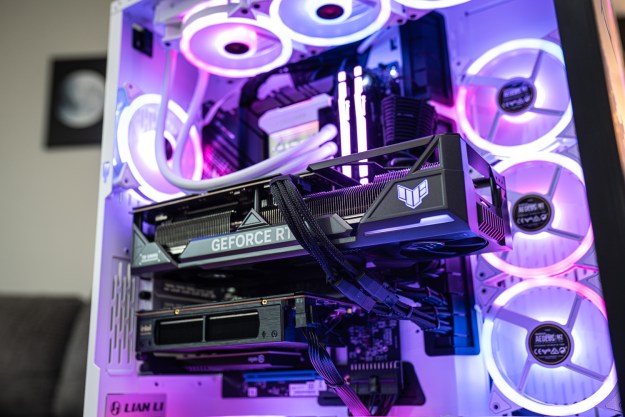Microsoft’s Project Natick isn’t about a new two-in-one tablet or piece of clever software. Instead, the company wants to sink self-sufficient data centers to the ocean floor. Phase two of its push to revolutionize the data center began on Wednesday as Microsoft’s team dropped a container-sized prototype on the seafloor near Scotland’s Orkney Islands.
According to Microsoft, the 40-foot prototype contains 12 racks playing host to 864 servers and their associated cooling systems. The team assembled and tested the prototype in France, shipped it to Scotland via a flatbed truck, lowered it onto the ocean floor, towed it out to sea, and connected a cable consisting of fiber optics and power. It now sits quietly with the fish 117 feet below the ocean surface.
Powering this submerged data center is the European Marine Energy Center that relies on tidal turbines and wave energy converters to generate electricity from sea movement. Wind turbines from local farming lands contribute to the power as well. All of this power is piped from the Orkney Island power grid through a cable attached to the data center. At full capacity, the data center uses just under a quarter of a megawatt of power.

While the idea might seem like something out of science-fiction, the realities of water-bound computing, especially on a large scale, are very positive. The remote nature of such a facility would mean it would require fewer on-site staff (if any at all), it would be naturally resistant to weather and the environment, possibly even more so than solid ground structures, and perhaps most importantly, would require almost no active cooling.
Keeping a data center at a chilly operational temperature is one of the biggest challenges for modern operators, with the likes of Facebook looking to innovate by only using renewable energy and recycled waste heat. But putting a data center under the sea could be much more efficient, as it would require no energy to cool at all.
Microsoft’s first prototype sat 30 feet below the surface just off the California coast in 2015 and remained there for four months. Named after Leona Philpot, an obscure character from the Halo franchise, it survived perfectly well.
Eventually, Microsoft wants to ramp up and rapidly deploy pre-packaged module data centers everywhere in the world, including “the roughest patches of sea.” Microsoft says they could be “ordered to size, rapidly deployed and left to operate lights out on the seafloor for years.”

Of course, these submerged data centers won’t be dropped into remote locations of the Earth’s oceans. The plan is to place them near coastal cities around 120 miles off the coast. This will help artificial intelligence-driven technologies thrive in coastal communities and extend out to land-based data centers that are typically located inland to avoid floods, hurricanes, and other troublesome weather.
Microsoft says the underwater data centers are built to last up to 20 years, though they have an anticipated real lifespan of five years. Their replacement would likely be the result of required hardware upgrades within the individual servers rather than structural damage or failure.
Updated on June 6: Added the launch of phase two.




